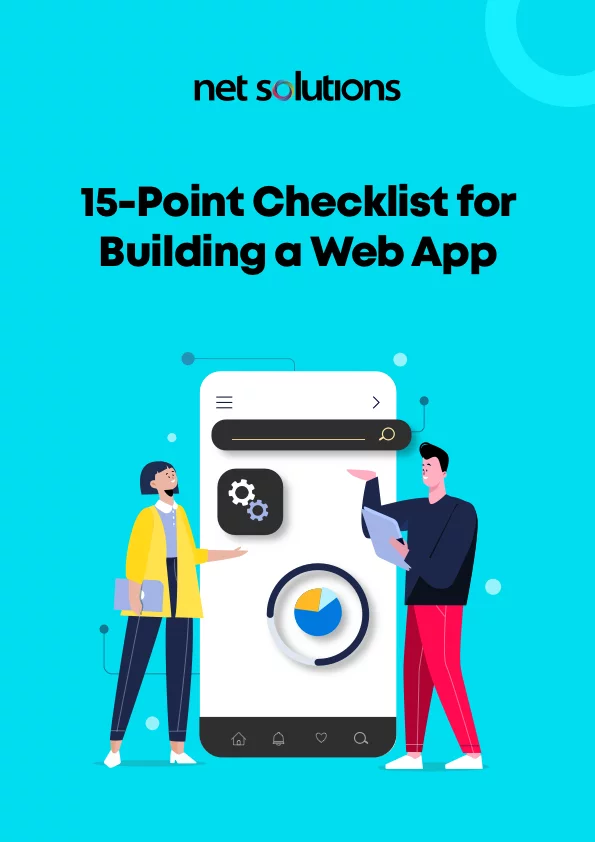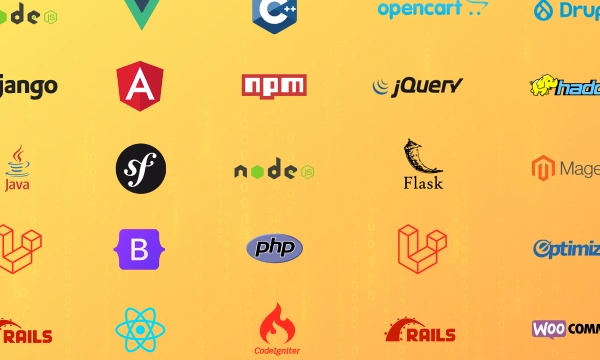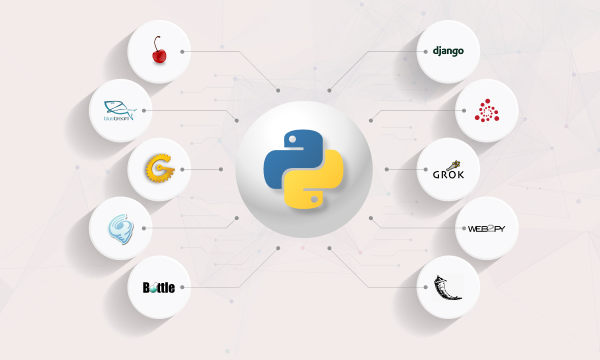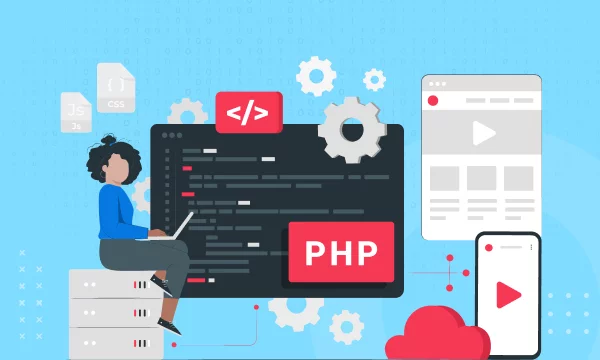Demand for high-quality web applications is massive, and a recent study predicts that the market for progressive web apps alone will grow to $10.44 billion by 2027.
That opens the doors to impressive revenues for startups and established companies who want to launch and market their own software products. However, before beginning that entrepreneurial journey, there’s the all-important question of price.
What is the average cost of web development in 2024?
A quick Google search will yield prices that range from $30,000 to $100,000+, and the wide range makes perfect sense. Rates will vary considerably based on project complexity and the functionality you’re hoping to achieve.
In this blog, we’ll explore the factors that influence the software development rates that outsourcing partners charge. And if budget is a factor in bringing your product to life, you’ll find plenty of tips that will help you manage costs and while delivering a quality web app to the market.

We respect your privacy. Your information is safe.
Factors That Impact Web App Development Costs
Why are web app development costs so varied?
Trying to estimate a general cost for design and development services is a bit like asking: “How much does a mode of transportation cost?” Are you asking about a Vespa or a Rolls-Royce? A skateboard or a Lamborghini?
The cost of web application development will vary based on a range of factors—each impacting the development time required to bring the product to market and the amount of expertise involved.
The price will also vary depending on where your outsourcing partners are located, since labor costs correlate to the overall cost of living in any given location.
Here are some of the most significant factors that impact web app development costs. Later, we’ll explore how you can reduce costs without sacrificing quality.
1. Project scope and complexity
What do you hope to accomplish with your web app?
Functionality is the most important factor related to cost, and a simple software product with a simple backend and a plain frontend will cost a great deal less than a complex app development project that requires expertise in a variety of programming languages.
Complexity expands the scope of work, and the following factors can increase the cost:
- Multiple third-party integrations requiring APIs
- Multiple databases
- Compatibility across different platforms (e.g., iOS, Android, Windows, Mac)
- Large number of screens that users encounter
The cost of the project can also increase with a tight deadline since more work is required to ensure that software development teams produce high-quality code in short order.
2. UI/UX design complexity
The complexity of your User Interface (UI) will impact your overall costs, as will working to design a seamless User Experience (UX).
These factors require skilled designers, talented front-end development specialists, and a clear understanding of market needs that a team can only gain through market research and analysis.
Of course, a fully polished UI and UX aren’t always necessary for your initial launch. Many companies prefer to launch a Minimum Viable Product (MVP) that allows them to test product-market fit with their initial audience, adding new features based on their feedback.
In the end, of course, you’ll need a working UI and a functional UX in order for your product to be minimally viable in the first place. Project costs will increase based on your needs.
3. Hiring model
Where will you find software developers to build your web app?
You’ve essentially got three different options: Building an in-house team, hiring freelancers, or contracting with an outsourcing partner.
Keep in mind, however, that you can combine any of these options. For example, you can have your in-house team collaborate with the outsourcing team to fill in any gaps in skill set or labor capacity.
A. In-house teams
An in-house team will be part of your organization. You will hire them as full-time employees and you’ll be responsible for covering things like payroll taxes, benefits, and any other legal obligations that come with having full-time employees.
As part of your organization, in-house development teams will typically cost you more in the long run, since there are hidden costs associated with full-time employees. You’ll also need the resources, time, and energy to manage them.
On the plus side, they will work with you directly and become intimately familiar with your company’s vision and mission.
B. Freelancers
Freelance software developers are self-employed. They will invoice you directly, usually based on an established hourly rate, and many will work for a reasonable price.
There are talented freelancers out there, and if you thoroughly vet them and review their work, they can provide real value to your team.
On the downside, freelancers aren’t part of a larger team, and they might lack an understanding of the big picture. That means they might struggle to grasp how your in-house team or an outsourcing team partner’s work fits into the overall development process.
C. Outsourcing
Outsourcing software development to an app development company can be a cost-effective solution that doesn’t sacrifice quality for price.
Full-service software development firms come with designers, developers, project managers, QA engineers, and other specialists who are used to working together, have established business processes, and know how to deliver powerful results.
A solid team has experience with everything from platform-based mobile apps to Progressive Web Applications (PWAs).
Hiring an outsourcing partner from overseas can provide an excellent return on your investment, with one caveat—do your due diligence before signing any contracts!
Ask for customer case studies, read reviews on websites like Clutch, and interview them to make sure they communicate well in your team’s operating language.
The following chart covers the pros and cons of each hiring model.
| Cost | Expensive In-house employees are costly when you factor in payroll taxes, benefits, and downtime. |
Affordable Freelancers may offer reasonable rates, especially in parts of the world where the cost of living is lower. |
Affordable Outsourced teams are usually quite affordable in places like India and Latin America. |
| Communication Skills | High-level Successfully managed in-house teams can communicate efficiently and often work well together. |
Moderate to Low
Working with freelancers, you might find it challenging to communicate with them and inspire them to connect with the team. |
Moderate to High
When choosing a team that is well-managed and fluent in your language, communication can be excellent. |
| Work Quality | Medium to High
In-house teams often produce high-quality work, assuming you select for the right qualities and have strong management guiding them. |
Variable
Freelance contracts can range from exceptionally talented to marginal, so be sure to vet them properly. |
Medium to High
Just like with in-house teams, the quality of work can be excellent if you choose the right partners. |
4. Geographical location of the development team
There’s an old saying about purchasing real estate. They say the three items that matter in real estate are: “Location, location, location.” Unfortunately, things aren’t so simple when it comes to outsourcing software development.
Location is certainly a factor because the cost of living differential between one country and the next can greatly impact price, but we don’t recommend sacrificing price for quality. That will cost you much more in the long run!
The good news is that you can find great software teams at reasonable rates in places like India and parts of Eastern Europe, assuming you do your homework.
You’ll want to consider factors such as:
- English fluency (or fluency in whatever language your team speaks)
- Expertise in the skill sets you require
- Case studies and overall track record
- Time zones (and whether they’re willing to match your work hours, if that’s something you require)
Here are the average hourly rates for software development teams in different regions across the globe, but keep in mind that there’s a great deal of variation!
Take a look at our in-depth exploration of rates around the world, country by country, to learn more about global outsourcing rates and learn about each area’s expertise.
| North America | $182 |
| Western Europe | $149 |
| Eastern Europe | $66 |
| Latin America | $41 |
| Asia Pacific | $33 |
| Africa | $35 |
| Australia and New Zealand | $127 |
Additional and Hidden Costs
When building your software development budget, it’s important to consider identifying additional costs, some of which might surprise you.
These additional costs, above and beyond the price of designing and developing your custom web application, include many of the normal costs of running an online business.
1. Post-release costs
Every software application contains bugs—that’s just a fact of life, like death, taxes, and email spam.
Good Quality Assurance (QA) will greatly reduce the number of bugs before you release your software in the wild, but small bugs will pop up and you’ll need to fix them along the way.
Software maintenance involves updating the app to improve data security and ensure that it works well with any integrations, along with fixing bugs that users report. These activities can comprise 10 – 25% of a software budget.
You’ll also have costs associated with hosting and server space, which will change based on the amount of traffic you receive.
2. Change requests
You may have change requests throughout the development process, even after it’s already underway. This requires rework, and it will increase the cost.
We’ll talk more below about how to reduce the number of change requests through proper planning. Having a clear understanding of your requirements from the beginning is a great way to save on software development costs.
3. Third-party integrations
Modern apps, whether they’re complex web apps or simple ones, will often integrate with other software platforms that enable or improve their functionality. For example, Uber uses GPS, as does Yelp and any other web app that requires location services.
Other web apps interface with websites and platforms in unique and interesting ways, and this requires integration with their APIs.
For example, Language Reactor is a language-learning app that integrates with Netflix and Youtube to display subtitles in multiple languages at the same time. Language students can also view the entire dialogue of the show’s script, saving words they don’t know for future study.
The software’s functionality is only possible because Netflix and Youtube gave Language Rector’s development team access to their APIs.
If you need to include integrations with your software, from APIs to GPS capabilities, that may increase your post-development costs. Some companies will give you access to their APIs for free, but others turn a profit by allowing third-party apps to integrate their technology into those apps.
4. Licensing fees
You will likely encounter some licensing fees on top of your web development costs. For example, if you’re selling an app on Apple’s App Store or Google Play, they will charge you to appear on the platform.
Additionally, you may have to pay other licensing fees connected to your industry or your individual offerings.
How to Reduce Web App Development Cost
Now it’s time to answer the million-dollar question. How can you reduce costs without sacrificing quality?
An experienced outsourcing company can help you strategize to reduce front-end and back-end development costs without omitting the essentials that you need to attract early adopters and gain traction in the market.
The following tips can help protect your budget while delivering a powerful web app.
1. Focus on the MVP
A Minimum Viable Product (MVP) is a software application designed to test product-market fit.
Rather than focusing on complete optimization with a full-fledged software product that has all the features you’ve dreamed of, an MVP delivers a solution without too much flair.
The idea behind building an MVP is that your original set of users will tell you exactly what they want. Yes, your marketing research may have yielded good ideas during the discovery phase of your design process, but your initial user base is rich with innovation as well.
By waiting to receive feedback from real users, you won’t waste time and resources developing features and functionality that don’t matter to them.
The MVP model of software development becomes a work in progress, where you’re continually adding and testing features based on user feedback. Business analysts review the data, see what users respond to, and double down on what works.
At Net Solutions, we’ve developed countless MVPs for startups like EdPlace and world-renown organizations like the Harvard Business Review.
Big or small, an MVP can help can save time, money, and other precious resources, so you can save your budget for truly innovative features that your users want—adding more features throughout the product’s lifecycle.
2. Use existing third-party tools and platforms
It’s an amazing time to launch a web application because software development teams no longer have to build everything from scratch.
For example, if you want to build an eCommerce store that is truly unique—not something built from a template—you can start with a platform like Magento from Adobe.
Used by online retailers large and small, from Warby Parker to Nike, Magento is easily customizable and infinitely flexible.
Of course, that’s just one example. There are an endless variety of third-party tools and modules you can integrate with your web app to perform any variety of tasks.
Your outsourcing partners can customize when necessary, but they won’t have to chew up your budget creating functions that someone else has already built. In fact, many of these tools are open-source and cost nothing, although the paid versions are sometimes more cost-effective because the providers have worked out all the kinks.
Ask your software development team which third-party tools and platforms they can use to more effectively allocate your budget.
3. Plan your project well ahead of time
A well-planned software development project, with clear documentation and plenty of advance notice, is far less likely to run over budget. In fact, planning means you can apply labor and other resources strategically, which will likely save you money.
By contrast, poor planning with little advance notice can result in long hours, unnecessary rework, and rush fees. Plus, whether you’ve got an in-house staff or an outsourced development team, you’re likely to get more creative solutions out of them if they’ve got time on their side.
4. Test, test, and test again
Quality Assurance (QA) is an integral part of the software development process. It might not seem quite as glamorous as design and development, but QA engineers perform a valuable function that cannot be overlooked.
Regular testing allows you to address bugs quickly, so you don’t end up with unnecessary rework down the line. You can even hire an outsourcing partner in a different time zone to perform QA testing while your in-house team sleeps, just like Kitco did when they hired us.
These are some of the ways you can reduce your budget without skimping on quality software development. Be sure your development partners and in-house teams are aware of these cost-protection methods.
Web App Cost Estimation Examples
What does it cost to develop different types of web applications?
We’ve listed a range of costs for different types of web apps: eCommerce platforms, online Learning Management System (LMS) platforms, Client Relationship Management (CRM) software, and Healthcare and FinTech apps.
Keep in mind that these prices will be influenced by all the other factors we’ve listed on this page, from software complexity to the location of your development team.
1. eCommerce platform
A custom-built eCommerce website, as opposed to a premade storefront based on a template from a SaaS eCommerce platform, will have a unique look and feel. Templates are fine for mom-and-pop retailers, but if you’re looking to distinguish yourself, a customized storefront based on Magento is the way to go.
Depending on what you need, this will likely cost you between $20,000 and $70,000. The Land Rover website, the Graze website, and other successful eCommerce stores are built on Magento.
Examples: Land Rover and Graze
Development price range estimate: $20,000 – $70,000
2. Online Learning Management System (LMS)
Online Learning Management Systems (LMS), like the one we created for Harvard Business Review called HBR Ascend, help learners of all ages to engage content in entirely new ways.
An LMS can range from simple and largely text-based to an incredibly complex app that involves video streaming and access to other multimedia content. The variety of possible features makes it difficult to provide a detailed estimate for the price of developing an LMS.
That said, a minimal LMS might cost you around $30,000, while an LMS with a wide variety of features could cost around $100,000.
Examples: EdPlace, Soaq, HBR Ascend (from Harvard Business Review)
Development price range estimate: $30,000 – $100,000
3. Client Relationships Management (CRM) platform
Just as with an LMS, Client Relationship Management software can vary a great deal in terms of functionality. A minimal, get-the-job-done internal CRM could cost around $30,000, while something far more powerful might cost $100,000 or more.
Creating something like Salesforce or Hubspot would cost more than a half-million dollars, but remember, those platforms weren’t built overnight. Years of revision based on customer input turned the most popular CRMs into what they are today.
Examples: Salesforce, Hubspot
Development price range estimate: $30,000 – $100,000+
4. Healthcare or Fintech web app
This category of custom web applications is even more difficult to narrow down than the others we’ve mentioned in terms of price.
There is a vast array of different functions a Healthcare or Fintech app might perform, from something relatively simple like managing internal healthcare documents for a hospital to something immensely complicated like enabling stock trades or analyzing option flows.
Examples: Smartcare, Unusual Whales
Development price range estimate: $30,000 – $500,000+
Get a Quote for Your Web App
Are you looking to develop a web app to capture a market niche or improve your internal business operations?
Net Solutions is a software development firm headquartered in Chandigarh, India, and we’ve been developing high-quality, cost-effective software for more than three decades.
Frequently Asked Questions
1. What is the difference between a web app and a mobile app?
Mobile apps consist of software that users download to their phones or tablets. Social media apps like Facebook Messenger and Instagram, for example, live on the device itself. They are specifically designed for either iOS or Android platforms.
By contrast, users access web apps directly from their browsers. They are platform-independent, so you don’t need to create different versions for iOS or Android.
2. What are the benefits of developing an app?
Developing an external app, targeting businesses or consumers, can be a lucrative endeavor if you connect with a target audience and fulfill a need that the market doesn’t currently address (or addresses poorly).
Of course, many businesses develop apps to address internal problems. For example, a manufacturer might create their own Enterprise Resource Planning (ERP) software, or a healthcare provider might create their own patient management software.
There are many benefits to building an app, but quality software development isn’t cheap—so make sure you have a genuine business need or a powerful niche to serve before starting down this path.
3. How can I choose the right web app development partner for my project?
You can find talented web developers all around the world, from Canada to India, from Ukraine to the USA. Naturally, rates will be more competitive in areas with a lower cost of living, but price should not be your only criterion.
When choosing a web app development partner, evaluate the services they offer. Look for positive reviews and case studies demonstrating their experience. Speak with them to ensure communication is effortless, and ask challenging questions to assess their knowledge.
That just scratches the surface, of course. Check out our guide to choosing the right outsourcing partner to cover all your bases.











